Federal Funds For Research And Development: Fiscal Years 2009-11 - National Service Foundation Page 308
ADVERTISEMENT
 1
1  2
2  3
3  4
4  5
5  6
6  7
7  8
8  9
9  10
10  11
11  12
12  13
13  14
14  15
15  16
16  17
17  18
18  19
19  20
20  21
21  22
22  23
23  24
24  25
25  26
26  27
27  28
28  29
29  30
30  31
31  32
32  33
33  34
34  35
35  36
36  37
37  38
38  39
39  40
40  41
41  42
42  43
43  44
44  45
45  46
46  47
47  48
48  49
49  50
50  51
51  52
52  53
53  54
54  55
55  56
56  57
57  58
58  59
59  60
60  61
61  62
62  63
63  64
64  65
65  66
66  67
67  68
68  69
69  70
70  71
71  72
72  73
73  74
74  75
75  76
76  77
77  78
78  79
79  80
80  81
81  82
82  83
83  84
84  85
85  86
86  87
87  88
88  89
89  90
90  91
91  92
92  93
93  94
94  95
95  96
96  97
97  98
98  99
99  100
100  101
101  102
102  103
103  104
104  105
105  106
106  107
107  108
108  109
109  110
110  111
111  112
112  113
113  114
114  115
115  116
116  117
117  118
118  119
119  120
120  121
121  122
122  123
123  124
124  125
125  126
126  127
127  128
128  129
129  130
130  131
131  132
132  133
133  134
134  135
135  136
136  137
137  138
138  139
139  140
140  141
141  142
142  143
143  144
144  145
145  146
146  147
147  148
148  149
149  150
150  151
151  152
152  153
153  154
154  155
155  156
156  157
157  158
158  159
159  160
160  161
161  162
162  163
163  164
164  165
165  166
166  167
167  168
168  169
169  170
170  171
171  172
172  173
173  174
174  175
175  176
176  177
177  178
178  179
179  180
180  181
181  182
182  183
183  184
184  185
185  186
186  187
187  188
188  189
189  190
190  191
191  192
192  193
193  194
194  195
195  196
196  197
197  198
198  199
199  200
200  201
201  202
202  203
203  204
204  205
205  206
206  207
207  208
208  209
209  210
210  211
211  212
212  213
213  214
214  215
215  216
216  217
217  218
218  219
219  220
220  221
221  222
222  223
223  224
224  225
225  226
226  227
227  228
228  229
229  230
230  231
231  232
232  233
233  234
234  235
235  236
236  237
237  238
238  239
239  240
240  241
241  242
242  243
243  244
244  245
245  246
246  247
247  248
248  249
249  250
250  251
251  252
252  253
253  254
254  255
255  256
256  257
257  258
258  259
259  260
260  261
261  262
262  263
263  264
264  265
265  266
266  267
267  268
268  269
269  270
270  271
271  272
272  273
273  274
274  275
275  276
276  277
277  278
278  279
279  280
280  281
281  282
282  283
283  284
284  285
285  286
286  287
287  288
288  289
289  290
290  291
291  292
292  293
293  294
294  295
295  296
296  297
297  298
298  299
299  300
300  301
301  302
302 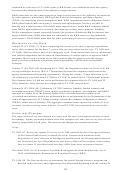 303
303 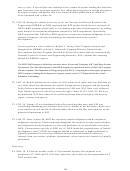 304
304  305
305  306
306 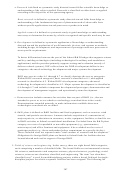 307
307  308
308  309
309 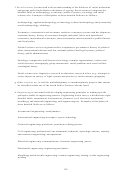 310
310 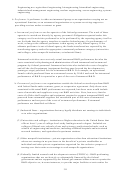 311
311  312
312 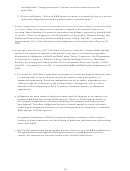 313
313  314
314  315
315  316
316  317
317  318
318  319
319  320
320  321
321  322
322  323
323  324
324  325
325  326
326  327
327  328
328  329
329 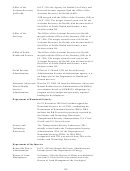 330
330  331
331  332
332  333
333  334
334  335
335  336
336 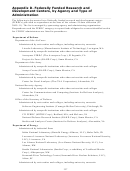 337
337 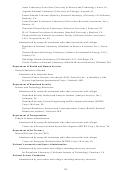 338
338  339
339  340
340 presents the broad fields and their associated detailed fields, together with illustrative
disciplines within detailed fields.
The illustrative disciplines are intended to be guidelines, not sharp definitions; they
represent examples of disciplines generally classified under each detailed field. A
discipline under one detailed field may be classified under another detailed field when the
major emphasis is elsewhere. Research in biochemistry, for example, might be reported as
biological, agricultural, or medical, depending on the focus of the project. Human
biochemistry would be classified under biological, but animal biochemistry or plant
biochemistry would fall under agricultural. In no case is the research reported under more
than one field. No double counting is intended or allowed.
a. Environmental sciences (terrestrial and extraterrestrial) are, with the exception of
oceanography, concerned with the gross nonbiological properties of the areas of the
solar system that directly or indirectly affect human survival and welfare. Obligations
for studies pertaining to life in the sea or other bodies of water are reported as support
of oceanography and not biology. Environmental sciences comprises the detailed fields
of atmospheric sciences, geological sciences, oceanography, and environmental sciences
nec. Examples of disciplines in these detailed fields are as follows:
Atmospheric sciences: aeronomy, extraterrestrial atmospheres, meteorology, solar
science, weather modification
Geological sciences: engineering geophysics, general geology, geodesy and gravity,
geomagnetism, hydrology, inorganic geochemistry, isotopic geochemistry, laboratory
geophysics, organic geochemistry, paleomagnetism, paleontology, physical geography
and cartography, seismology
Oceanography: biological oceanography, chemical oceanography, marine geophysics,
physical oceanography
Environmental sciences nec
b. Life sciences is concerned with the scientific study of living organisms and their
systems. It comprises five detailed fields: agricultural sciences, biological sciences
(excluding environmental biology), environmental biology, medical sciences, and life
sciences nec. Examples of the disciplines in these detailed fields are as follows:
Agricultural sciences: agronomy, animal sciences, food science and technology, fish and
wildlife, forestry, horticulture, phytopathology, phytoproduction, plant sciences, soils
and soil science, general agriculture, other agriculture nec
Biological sciences (excluding environmental biology): anatomy, biochemistry, biology,
biometry and biostatistics, biophysics, botany, cell biology, entomology and parasitology,
genetics, microbiology, neuroscience (biological), nutrition, physiology, zoology, other
biological sciences nec
Environmental biology: ecosystem sciences, evolutionary biology, limnology,
physiological ecology, population and biotic community ecology, population biology,
systematics, other environmental biology nec
308
ADVERTISEMENT
0 votes
Related Articles
Related forms
Related Categories
Parent category: Legal









